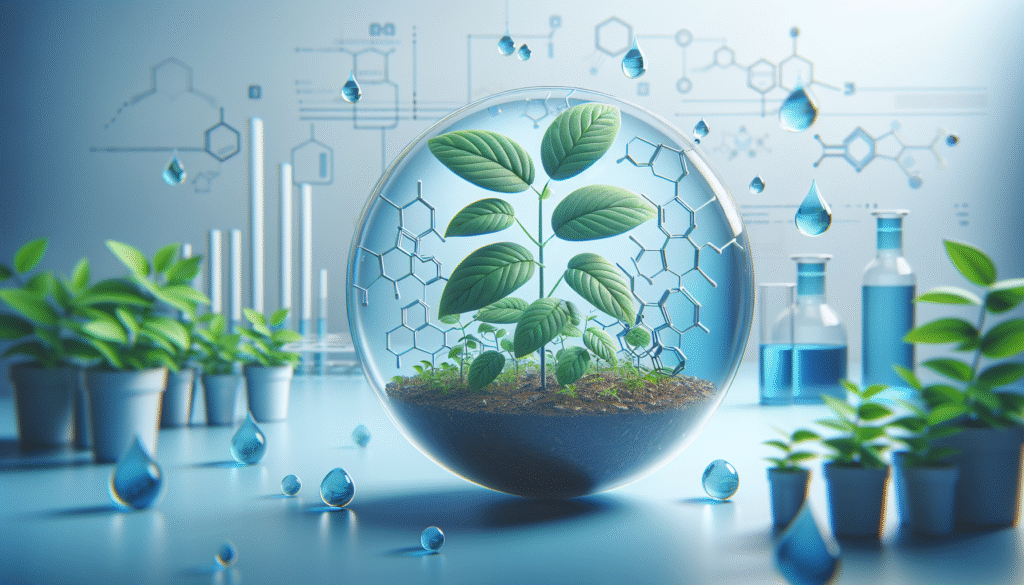
What role does a chemical like Methylene Blue play in the growth and development of plants?
Introduction to Methylene Blue
Methylene Blue, a synthetic dye with a deep blue color, is known primarily for its applications in biology and medicine. However, recent scientific investigations have sparked interest in its potential role in agriculture, specifically concerning plant growth. Understanding how Methylene Blue interacts with plants can provide vital insights into innovative agricultural practices.
Methylene Blue is typically recognized for its antibacterial and antiviral properties but evaluating its effects on photosynthesis, nutrient uptake, and overall plant health opens a new window into its possible benefits and drawbacks in horticulture and agriculture.
Chemical Properties of Methylene Blue
Before diving into the effects on plant growth, it is essential to understand what Methylene Blue is chemically. This compound is thiazine-derived, characterized by its blue color owing to its structural makeup.
Chemical Structure
The chemical formula for Methylene Blue is C16H18ClN3S, which indicates the presence of nitrogen, sulfur, and chlorine atoms. This composition allows the dye to interact with various biological systems, including plant cells.
Solubility
Methylene Blue is soluble in water, making it accessible for plants through soil or irrigation. Its solubilization increases the potential for uptake by roots, which is crucial for assessing how it may influence plant physiology.

The Mechanism of Action in Plants
Understanding how Methylene Blue functions within plant systems involves exploring its mechanisms of action. This includes photosynthesis, respiration, and nutrient absorption.
Effects on Photosynthesis
Photosynthesis is the process by which plants convert light energy into chemical energy. Methylene Blue has been shown to influence photosynthetic efficiency:
- Light Absorption: It may enhance the absorption of light, particularly in certain wavelengths, thereby increasing the rate of photosynthesis.
- Chlorophyll Production: There are indications that Methylene Blue can stimulate chlorophyll production, resulting in greener and healthier foliage.
Impact on Respiration
Respiration is another critical process for plant health. Methylene Blue may affect respiration rates by:
- Electron Transport: Acting as an electron carrier in the electron transport chain can potentially enhance ATP production, essential for energy metabolism.
- Stress Reduction: By mitigating oxidative stress during respiratory processes, Methylene Blue may help plants better withstand environmental challenges.
Uptake of Nutrients
The uptake of nutrients is vital for plant health. Methylene Blue may affect nutrient availability and absorption through several pathways:
- Soil Microbial Activity: It can promote beneficial microbial activity in the soil, leading to enhanced nutrient solubility and mobilization, allowing plants to absorb them more efficiently.
- Root Health: Methylene Blue may improve root structure and function, facilitating better nutrient uptake and overall plant vitality.
Empirical Studies on Methylene Blue and Plant Growth
Various studies have attempted to unravel the effects of Methylene Blue on different plant species. This section presents an overview of key findings from these empirical investigations.
Study Findings Overview
| Study Focus | Key Findings |
|---|---|
| Tomato Plants | Methylene Blue enhanced growth rates and fruit yield significantly. |
| Lettuce Varieties | Increased chlorophyll content and improved leaf quality were noted. |
| Wheat Plants | Notable improvements in nutrient uptake and stress resilience. |
Case Study: Tomato Plants
Research has shown that the application of Methylene Blue leads to significant growth enhancement in tomato plants. Specifically, results indicate:
- Increased Height: Treated plants exhibited greater height compared to control groups.
- Higher Yield: Fruit yield was significantly improved, suggesting enhanced metabolic activity.
Case Study: Lettuce Varieties
Different lettuce varieties respond uniquely to Methylene Blue application. The findings suggest:
- Chlorophyll Content: Levels of chlorophyll a and b were elevated in treated samples, contributing to a more robust green color.
- Thickness of Leaves: Enhanced leaf thickness also contributed to improved overall health.
Case Study: Wheat Plants
Wheat, a staple crop worldwide, demonstrated interesting results from Methylene Blue applications:
- Nutrient Uptake: Treated wheat plants showed increased absorption of macronutrients like nitrogen and phosphorus.
- Resilience to Stress: Under drought conditions, Methylene Blue-treated plants exhibited better survival rates, highlighting its potential use in climate-smart agriculture.

Potential Risks and Limitations
Despite these promising observations, there are potential risks and limitations associated with the use of Methylene Blue in agriculture. Understanding these drawbacks is crucial for responsibly incorporating it into growth practices.
Toxicity Considerations
One of the primary concerns is the toxic effects Methylene Blue may have at elevated concentrations:
- Plant Toxicity: High doses could result in phytotoxicity, inhibiting growth rather than promoting it.
- Soil Microbial Disruption: Excessive application may disrupt beneficial soil microbes, leading to a negative feedback loop in soil health.
Environmental Impact
The environmental ramifications of using Methylene Blue also warrant consideration:
- Water Contamination: If not managed properly, runoff can contaminate nearby water bodies, leading to ecological imbalances.
- Biodiversity Risks: The application of synthetic chemicals in agricultural systems can adversely affect local fauna and flora.
Practical Applications in Agriculture
With a thorough understanding of Methylene Blue’s effects, you may consider practical applications in agriculture.
Dosage and Application Methods
The effective use of Methylene Blue requires careful dosage and application methods. Here are key considerations:
- Concentration: Studies typically employ a concentration range between 0.01% and 0.5% for plant applications. It’s essential to start lower and gradually increase to assess plant tolerance.
- Application Timing: Applying during critical growth phases, such as germination or early vegetative growth, may maximize benefits.
Integration into Current Practices
You can integrate Methylene Blue into existing agricultural frameworks through:
- Soil Treatment: Utilize as a soil amendment to promote greater microbial activity pre-planting.
- Foliar Sprays: Apply diluted solutions on foliage to enhance photosynthesis directly, especially during periods of high sunlight.
Future Research Directions
Further investigation is essential in fully elucidating Methylene Blue’s role in plant physiology and health. Certain gaps in understanding warrant more extensive studies.
Genetic Variability in Plant Responses
Not all plant species or varieties react uniformly to Methylene Blue exposure. Conducting research on genetic variability may provide insights into which crops can benefit most from such treatments.
Long-Term Effects on Plant Health
While short-term effects are documented, longitudinal studies examining the long-term health and productivity of plants treated with Methylene Blue will provide a clearer picture of its sustainability in agricultural practices.
Comparative Studies
Conducting comparative studies against other biostimulants or growth enhancers will help you assess Methylene Blue’s relative efficacy in promoting plant growth.
Conclusion
Methylene Blue exhibits fascinating properties that may contribute positively to plant growth when properly applied. Although challenges, including potential toxicity and environmental considerations, exist, ongoing research and empirical studies continue to shed light on this chemical’s role in agriculture.
You may leverage findings on Methylene Blue to improve plant productivity and health, particularly as the sector seeks innovative solutions to address food security and sustainable practices. However, it remains crucial to strike a balance, ensuring that applications are both effective and ecologically responsible.
As it stands, the journey of understanding Methylene Blue’s potential in plant growth is just beginning – and it could lead to significant advancements in how we approach agriculture in a changing world.